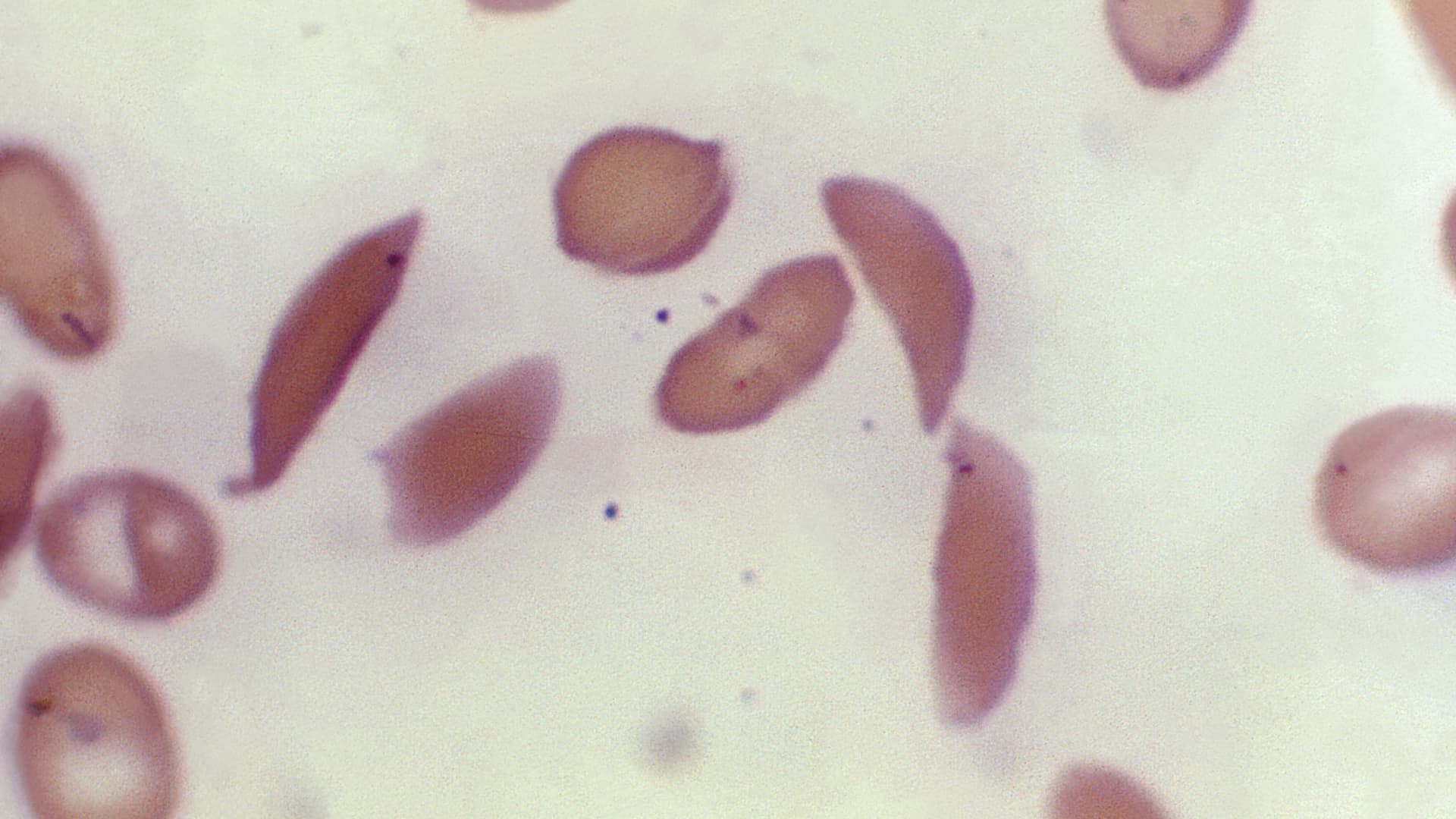Blood sample tube with blood for Sickle Cell Screen -Test. Sickle cell blood test, abnormal hemoglobin test.
Md Babul Hosen | Istock | Getty Images
The U.S. Food and Drug Administration has approved the country’s first gene-editing treatment, Casgevy, for use in patients with sickle cell disease.
The approval comes about a decade after the discovery of CRISPR technology for editing human DNA, representing a significant scientific advancement. Yet reaching the tens of thousands of people who could benefit from the treatment could be challenging given the potential hurdles — including cost — of administering the complex therapy.
Casgevy, co-developed by Vertex Pharmaceuticals and CRISPR Therapeutics, uses Nobel Prize-winning technology CRISPR to edit a person’s genes to treat disease. The treatment was approved by U.K. regulators last month.
Sickle cell, an inherited blood disorder, causes red blood cells to become misshapen half moons that get stuck inside blood vessels, restricting blood flow and causing what are known as pain crises. About 100,000 Americans are estimated to have the disease.
This microscope photo provided on Oct. 25, 2023, by the Centers for Disease Control and Prevention shows crescent-shaped red blood cells from a sickle cell disease patient in 1972. Britain’s medicines regulator has authorized the world’s first gene therapy treatment for sickle cell disease, in a move that could offer relief to thousands of people with the crippling disease in the U.K.
Dr. F. Gilbert/CDC via AP, File
Casgevy uses CRISPR to make an edit to a person’s DNA that turns on fetal hemoglobin, a protein that normally shuts off shortly after birth, to help red blood cells keep their healthy full-moon shape. In clinical trials, Casgevy eliminated pain crises in most patients.
The FDA approved the treatment for people 12 years and older.
“Sickle cell disease is a rare, debilitating and life-threatening blood disorder with significant unmet need, and we are excited to advance the field especially for individuals whose lives have been severely disrupted by the disease,” said Dr. Nicole Verdun, director of the Office of Therapeutic Products within the FDA’s Center for Biologics Evaluation and Research, in a statement.
“Gene therapy holds the promise of delivering more targeted and effective treatments, especially for individuals with rare diseases where the current treatment options are limited,” Verdun added.
While the treatment itself is administered only once, the whole process takes months. Blood stem cells are extracted and isolated before being sent to Vertex’s lab, where they’re genetically modified. Once ready, patients receive chemotherapy for a few days to clear out the old cells and make room for the new ones. After the new cells are infused, recipients spend weeks in the hospital recovering.
Vertex will take the lead on launching the drug and plans to target the estimated 32,000 people in the U.S. and Europe with severe cases of sickle cell.
Even among the people who could benefit the most, analysts worry few will clamor for a treatment that takes months to complete, carries the risk of infertility and could be cost prohibitive. Wall Street analysts expect the treatment to cost around $2 million per patient.
And, because the procedure is so complex, it will be limited to certain health facilities like academic medical centers.
Analysts expect Vertex to collect $1.2 billion in sales from the treatment in 2028, according to FactSet.
This is a developing story. Please check back for updates.

